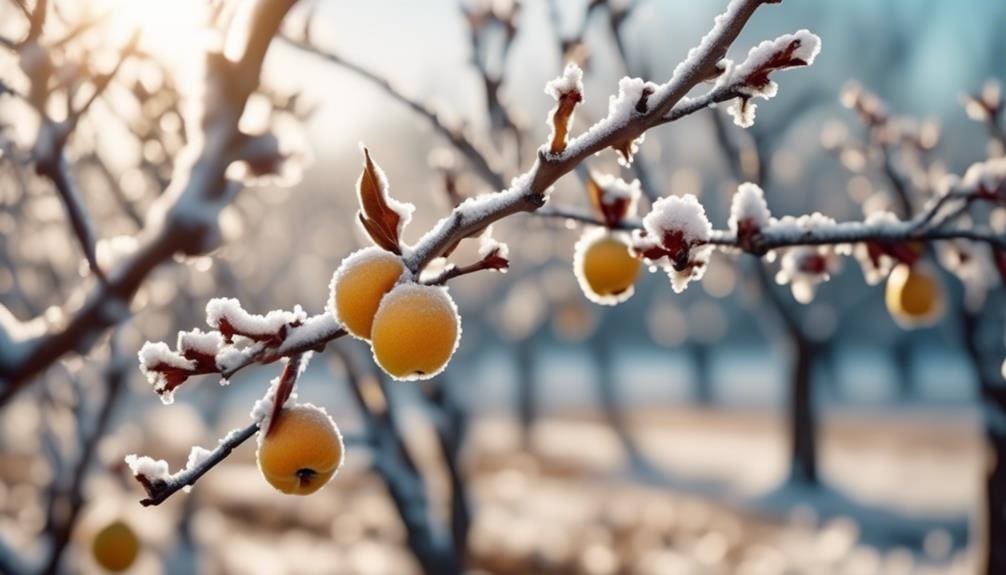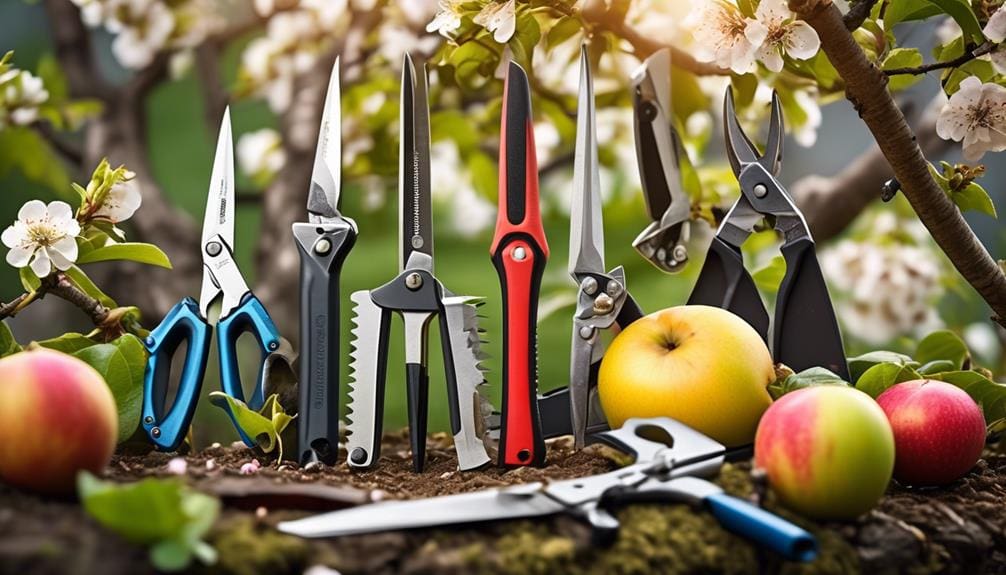Safety and Regulations
Prune Smart: Fruit Tree Timings Revealed
Just as a skilled sculptor knows the precise moment to chisel away at marble, we too understand the critical importance of timing when it comes to pruning our fruit trees.
Pruning isn’t merely a horticultural practice; it’s an art that balances the tree’s health with our anticipation for a bountiful harvest.
We’ve gathered insights on the best moments to prune various types of fruit trees, taking into account their unique life cycles and the roles that seasonal changes play.
While the winter chill may seem like a time for rest, it’s actually an ideal period for certain pruning activities that set the stage for spring’s renewal.
However, there’s a fine line between pruning enough and too much, and it’s vital that we tread this line carefully.
Join us as we reveal the secrets to smart pruning, ensuring our trees remain vigorous and productive, and discover the critical nuances that could make all the difference in your orchard’s output.
Key Takeaways
- Fruit tree pruning should be done during the dormancy period, from January to early April, for effective management of crop load and high fruit quality.
- Winter pruning stimulates the growth of both wood and fruiting buds, leading to increased productivity and a more fruitful harvest.
- Summer pruning is essential for managing vigorous growth, redirecting energy towards developing fruit, and maintaining tree shape for better fruit production.
- Choosing the right pruning tools is crucial for effective tree maintenance and orchard health, ensuring clean cuts and contributing to the overall health and form of the orchard.
Understanding Growth Cycles
To maximize fruit tree health and productivity, it’s essential to grasp the intricacies of their growth cycles, which dictate the timing of critical practices such as pruning and training.
We engage in fruit tree pruning during the dormancy period, typically from January to early April. This strategic timing allows us to manage the crop load effectively and maintain high fruit quality.
By employing precise cuts—heading cuts to encourage new growth and thinning cuts to enhance light penetration and air circulation—we tailor each tree’s form to its unique needs.
Training, especially in young trees, involves selecting a strong central leader and scaffold branches at optimal angles, around 30 degrees, to promote robust flower buds and bountiful fruit production.
Seasonal Pruning Guidelines
Building on our understanding of growth cycles, we’ll now explore seasonal pruning guidelines to ensure the vitality and yield of our fruit trees.
Pruning during dormancy, specifically from January to early April, is crucial. This is the best time to remove dead or diseased branches and shape the tree without risking winter injury. Pruned in late winter, apple and pear trees have time to heal before spring growth.
Summer pruning, on the other hand, benefits stone fruit trees like peaches by maintaining tree shape and promoting better fruit production. Our pruning tips include using heading cuts to encourage dense canopy growth and thinning cuts for light penetration.
Always remember, producing fruit requires precise adjustments, such as optimizing branch angles for maximum yield.
Winter Pruning Benefits


Winter pruning offers a host of advantages, including stimulating the growth of both wood and fruiting buds, essential for a tree’s productivity. We understand the need for precise and strategic actions to ensure our trees aren’t just surviving, but thriving.
- Winter Pruning Benefits
- Promote growth: Pruning back encourages the development of new branches, leading to a more fruitful harvest.
- Apple trees and pear trees benefit significantly from winter pruning, setting the stage for a bountiful season.
- Remove branches: We strategically eliminate dead or diseased branches, which allows for better air circulation and light to reach the inner canopy.
- Stone fruit trees are usually pruned in winter to maintain their shape and enhance their overall health.
Summer Trimming Techniques
Having discussed the merits of winter pruning, we now turn our focus to summer trimming techniques, which are crucial for managing a tree’s vigorous growth during the warmer months. We meticulously remove water sprouts and suckers, ensuring our stone fruits, apples, and pears redirect energy to developing fruit. It’s essential to lightly prune after late July to prevent winter injury and ensure the trees enter dormancy on time.
When shaping young trees, we cut unbranched whips to 30-45 inches, selecting branches for the lowest scaffold tier and securing wide crotch angles with limb spreaders. Our summer cuts are strategic: heading cuts promote dense canopy growth, while thinning cuts enhance light penetration and air circulation. We diligently remove dead branches, fostering a healthy, productive tree structure that offers the freedom of a bountiful harvest.
Selecting Pruning Tools


Selecting the appropriate pruning tools is a critical decision that influences the effectiveness of our tree maintenance and the health of the orchard.
For smaller branches:
- A sharp knife or hand pruners are ideal for making clean cuts without damaging the branch collar.
For larger branches:
- Loppers or a pruning saw may be necessary to cut back without harming the tree’s ability to grow.
We understand that freedom includes the ability to maintain our fruit trees properly. By removing dead or broken branches, we’re not just tidying; we’re ensuring the future health and productivity of the trees.
The right tools enable us to shape our orchard’s growth and form the scaffold branches that will support bountiful harvests for seasons to come.
Conclusion
In conclusion, we’ve uncovered the optimal timings for pruning fruit trees to bolster their health and fruit yield. By adhering to seasonal guidelines, we ensure winter cuts foster strong structures and summer trims enhance sunlight exposure.
Selecting the right tools is crucial for precise, clean cuts. Our collective efforts in smart pruning not only combat pests like borers but also sustain the vitality of our orchards, securing a bountiful harvest for seasons to come.


Hello there! I’m Logan Foster, the green-thumbed social media marketer behind the vibrant world of 1800TreeGuy.com. With roots firmly planted in arboriculture, I’ve branched out to help clients cultivate their dream outdoor spaces, one leafy canopy at a time. My knack for nurturing nature is more than a profession—it’s a way of life.
When I’m not talking trees and teaching the art of arboreal care, you can find me cheering on the Bulldogs—my alma mater’s pride and my forever team. My environmental studies there didn’t just teach me about ecosystems; they instilled a lifelong passion for protecting our planet.
Off the clock, I’m an adventurer at heart. Whether it’s trekking the Appalachian trails, pedaling down a mountain path, or crafting guides to share the wonders of the wild, I’m happiest with soil under my nails and the sun on my face. And let’s not forget Yoda, my pug sidekick. He may not have mastered the art of stillness, but his joyful grins are my daily dose of happiness.
I’m all about making connections—between people and the great outdoors and between my clients and their ideal landscape visions. My approach is personal; every tree has a story, and every garden reflects its caretaker.
If you want to green your scene or share in my outdoor escapades, give me a shout on Instagram or Facebook. Let’s cultivate a conversation and grow a community rooted in a love for the lush life.














